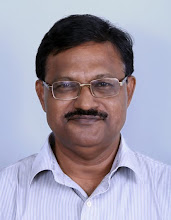Sunday, September 19, 2010
Develop three-dimensional reporting for the print medium
By O.J.George
Surf the internet for views on the print medium and its survival and future. No one is prepared to vouch for bright prospects for the newsprint product in the world of new developments in communication and dissemination. Definitely, these forecasts have relevance, mostly in the developed world.
However, it could be a universal truth that wherever vernacular papers cater to the cultural, social and religious ethos and when people are living in a community as inter-locked as in Kerala, readers would wait for the newspaper boy early morning.
There can be no cessation of interest in the matter, even as we have heard the main points of the same news items the previous day in numerous channels criss-crossing the state.
This does not mean that the newspapers should not change in their treatment of ingredients being dished out to the readers. There is no point in continuing to display news items in the five Ws and one H mode. Newspapers should find a way-out and give a product which would be something different and more analytical and appreciative.
The very concept of writing for newspapers should undergo a sea-change, for which the scribes have to be properly trained. But where is the training and where are the youngsters queuing up for a print medium job?
Mainstream Malayalam newspapers have started putting in more effort to include more stories of their own, other than the hard news items available and which cannot be spiked.
There were times of yore when front pages contained only classified advertisements. We have come a long way. Chronological reporting was the order of the day at one time. Minute-by-minute, blow by blow accounts of incidents and events were being reported accurately, disregarding the most important aspect of what transpired at the venue.
Then again there was transformation by giving the most important news point first and presenting the news story in an inverted pyramid structure. Still, there was great importance given to stenographic reporting. The coverage given to a political leader could be adjudged best if everything from A to Z he had said was carried.
Later, more involvement of the scribe in the content of what was being reported came into being. Developing the story from points jotted down and giving a tilt or twist had become quintessential.
Now these criteria would not suffice anymore for the print medium, which should develop a three-dimensional style incorporating the five Ws and one H as embedded points in an analytical piece on what transpired. The impact story would have more takers among readers, for, otherwise there would be nothing new for them.
Newspaper managements know how to sustain themselves and thrive. That is whey the media-mix has come into being. Many of the newspapers have their own channels which attract combined ad income for the channel as well as their print entity. Those who don’t have their own channels are apparently training themselves to launch one too soon. Others may perhaps have tie-ups.
Morever, the newspapers have their own internet editions through which they justify currency in news dispensation.
Change is, therefore, a must for the print medium, with which they would survive, particularly the vernacular variety with strong societal connections. However, even with all sorts of changes put in, it a moot-questionw whether the best talents can be attracted to the print medium any more. One cannot showcase clichés like ‘remuneration would not be a problem, remuneration package would be the best in the industry’ anymore.
Those gloating in the profession as of now need not be in glee, for the times are as precarious as any danger that might shove them off the hook.
Subscribe to:
Post Comments (Atom)


.jpg)



No comments:
Post a Comment